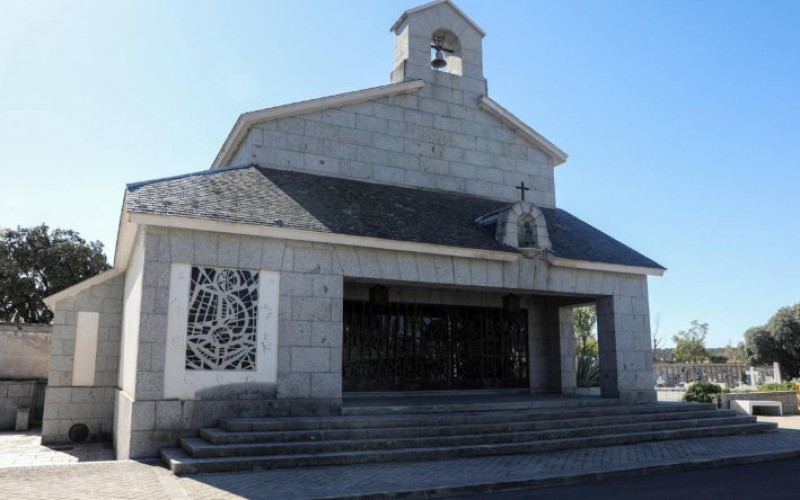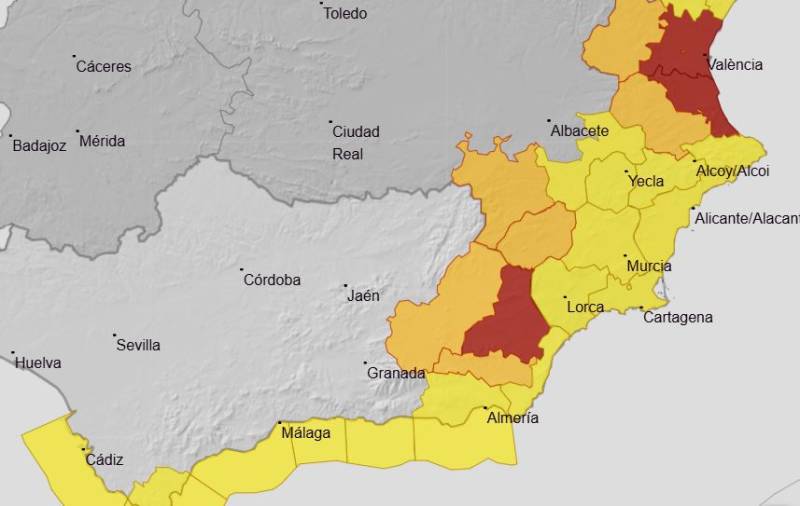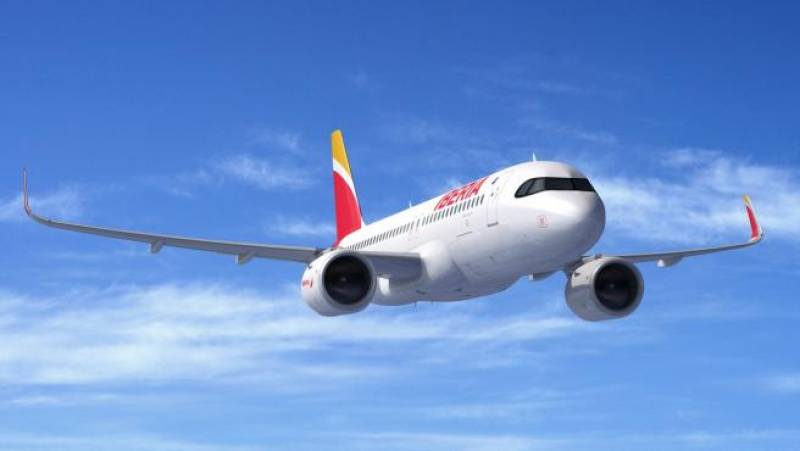- Region
- Vega baja
- Marina Alta
- Marina Baixa
- Alicante
- Baix Vinalopo
- Alto & Mitja Vinalopo
-
ALL TOWNS
- ALICANTE TOWNS
- Albatera
- Alfaz Del Pi
- Alicante City
- Alcoy
- Almoradi
- Benitatxell
- Bigastro
- Benferri
- Benidorm
- Calosa de Segura
- Calpe
- Catral
- Costa Blanca
- Cox
- Daya Vieja
- Denia
- Elche
- Elda
- Granja de Rocamora
- Guardamar del Segura
- Jacarilla
- Los Montesinos
- Orihuela
- Pedreguer
- Pilar de Horadada
- Playa Flamenca
- Quesada
- Rafal
- Redovan
- Rojales
- San Isidro
- Torrevieja
- Comunidad Valenciana
ARCHIVED - Franco leaves the Valle de los Cáidos almost 44 years after his burial
The ruler of Spain from 1939 to 1975 visited Murcia on just 4 occasions
At 12.53 on Thursday 24th October, 43 years, 11 months and one day after General Franco was buried at the monumental site of Valle de los Caídos, his mortal remains left the mausoleum where they have remained ever since and began their journey to the new burial site which has been decided upon in the cemetery of Mingorrubio.
The embalmed body of the former dictator was carried in the original coffin by his descendants to a hearse and taken to a helicopter, which took off at 13.41 on its way to Mingorrubio. On top of the coffin, as well as a Spanish flag, were five roses, one of the symbols of Francoism and the “Falange” movement, despite the government having forbidden symbolic exaltation of the General and his regime.
Earlier the two-ton granite slab covering Franco’s tomb had been removed by the use of for hydraulic lifting devices, and the exhumation was witnessed by the acting Minister for Justice, Dolores Delgado and a very small group of people including two of Franco’s grandchildren, María del Mar and José Cristóbal Martínez-Bordiú Franco. A religious service was conducted by the Abbot of the Valle de los Caídos, Santiago Cantera, and another Mass will be offered in Mingorrubio by Ramón Tejero, the son of the man who led an attempted Francoist coup d’état in 1981.

16 months have passed since the Spanish government announced that procedures were to be begun to exhume the remains of the dictator and place them in a location where they were not overtly glorified as they had been at the Valle de los Caídos, and eventually the project was completed just two and a half weeks before the general election will decide whether that government continues in office.
It is hard to describe to non-Spaniards how momentous an event this exhumation and re-burial is. 44 years may have passed since Franco’s death but as the delays and legal and political arguments over the last 16 months have demonstrated that is not a very long time in the collective memory of a nation, and while few people still remember the horrors of the Civil War (1936-39) many more recall the years of repression and reprisals against opponents of Franco in the years which followed.
Franco and Murcia
During the 36 years between the end of the war and Franco’s death he visited the Region of Murcia on just four occasions, all of them related in one way or another to water. The first of these visits was on 29th April 1946 after a disastrous flood affected low-lying areas in the centre of the Region and 3,000 families were temporarily re-housed in the city of Murcia.
The Bishop of Astorga memorably interpreted the flooding as “God’s punishment for celebrating a Carnival-style parade”, in reference to the Bando de la Huerta, but with hindsight even that seems in relatively good taste compared with a banner which welcomed the dictator in Molina de Segura, reading “Bendita la riada que nos trae al Caudillo” (Blessed be the flood which brings the Caudillo to us).
During the visit, Franco bemoaned the fact that in a period of 50 years nothing had been done to prevent such calamitous flooding, before travelling on the following day to Cartagena, where he visited the military arsenal, the submarine base and the site of the sinking of the Castillo de Olite – this was a ship which was sunk during the Civil War, causing the loss of 1,400 lives.

Franco’s second visit to Murcia in 1957 was for the inauguration of the thermal power station in Escombreras, when he stressed the importance of the water supply for the facility and received the city’s Gold Medal, and he returned in 1960 to address the issue of water supply infrastructures. The dam at the Cenajo reservoir had just been completed and plans were being drawn up for the Tajo-Segura water supply canal, and the dictator also approved a plan to improve irrigation farming in Lorca.
The final time Franco came to Murcia was in 1963, to officially open the reservoirs of Cenajo and Camarillas, an event which was acclaimed as putting a definitive end to flooding in the Segura basin. He also visited the city of Murcia, where the Mayor, Antonio Gómez Jiménez de Cisneros, explained to him that the Plaza Circular, which was under construction at the time, would soon become the centre of Murcia – unlike the expectation that flooding would no longer threaten the city, this proved to be the case.
Top image: the coffin is laid in the hearse (RTVE)
Image 2: the mausoleum which no longer houses the remains of Franco
Image 3: Franco at the opening of the Cenajo reservoir
Follow Murcia Today on Facebook to keep up to date with all the latest news, events and information in the Region of Murcia and the rest of Spain: https://www.facebook.com/MurciaToday/
-->


























